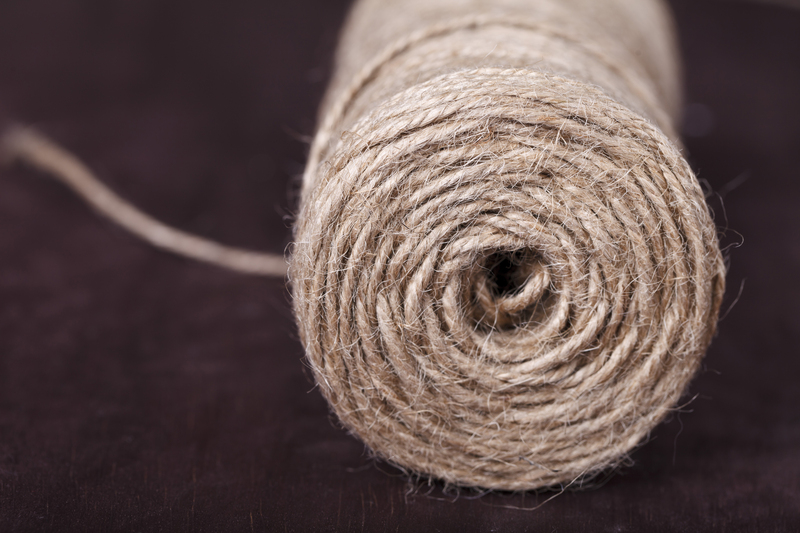Basic Tools for Every Avid Gardener
Posted on 04/09/2025
Basic Tools for Every Avid Gardener: Your Comprehensive Guide
Gardening can be a truly rewarding and therapeutic hobby, but even the most passionate gardener needs the right equipment for healthy plants and a thriving garden. Whether you're nurturing vegetables, growing beautiful blooms, or maintaining a manicured yard, using the correct gardening tools makes your tasks much easier and your outcomes far more satisfying. In this in-depth article, we'll cover the essential tools for gardeners of all levels, why they are important, and provide tips on choosing and maintaining your gardening gear.

Why Quality Gardening Tools Matter
Having the right tools in your gardening shed isn't a luxury--it's a necessity! Reliable, well-made tools improve efficiency, reduce strain, and help prevent injuries. For avid gardeners, investing in quality equipment means:
- Improved productivity: The job gets done faster and better.
- Plant health: Precise tools lead to less damage to roots and stems.
- Ergonomics: Properly designed handles and grips minimize fatigue.
- Durability: High-quality tools last for years, even decades.
- Safety: Well-maintained tools reduce the risk of slips and other accidents.
Equipping yourself with the basic gardening tools helps you tackle all common gardening chores, from planting and cultivating to pruning and cleanup.
The Ultimate List of Essential Garden Tools
Let's break down the most important gardening instruments every enthusiast should own. For organization, we'll categorize these tools based on their primary function.
1. Tools for Digging and Planting
- Garden Trowel: Indispensable for transplanting, planting bulbs, and digging small holes. Opt for a trowel with a sturdy, stainless steel blade and a comfortable grip. Look for measurement markings for depth accuracy.
- Hand Fork or Cultivator: These loosen compacted soil, remove weeds, and mix in fertilizer. A good cultivator has strong prongs and an ergonomic handle.
- Spade: A classic garden tool, useful for digging, edging, and moving soil. Choose a spade with a solid, rust-resistant blade and a reinforced handle.
- Garden Shovel: Perfect for scooping, moving compost, or digging larger holes. The design differs from a spade: shovels typically have curved blades, making them ideal for lifting materials.
All of these planting tools are essential for starting seeds, transplanting, and getting your garden beds ready each season.
2. Tools for Weeding and Cultivation
- Weeder: Use this for extracting stubborn weeds by the root without disturbing surrounding plants. There are many types, such as fishtail or dandelion weeders. Pick one with a comfortable, non-slip handle for best results.
- Hoe: Ideal for breaking up soil and cutting weeds at the roots. From the classic draw hoe to specially shaped stirrup hoes, there's a style suited for every gardener's preference.
- Garden Knife (Hori Hori): This multi-purpose Japanese tool can cut roots, divide perennials, and slice through tough soil. It's a favorite among serious gardeners.
3. Pruning and Cutting Tools
- Bypass Pruners: Essential for making clean cuts on live green stems and branches. Look for high-quality steel blades and a safety lock mechanism.
- Secateurs: Another term for hand pruners, these should fit comfortably in your hand. They're perfect for deadheading flowers and precise cutting tasks.
- Loppers: With their long handles, these are designed for cutting thicker branches up to 2 inches in diameter. Choose a pair with cushioned grips and a bypass or anvil blade suitable for your needs.
- Pruning Saw: Handy for tackling large, woody stems that are too thick for loppers. A folding saw fits neatly in your gardening bag and offers powerful cutting with safety in storage.
4. Watering Tools and Irrigation Essentials
- Watering Can: Select a can with a long spout for accurate watering at the base of plants. A detachable rose (sprinkler head) allows for gentle watering of delicate plants or seedlings.
- Garden Hose: Every gardener needs a reliable hose. Look for kink-resistant materials and the right length for your yard. A spray nozzle provides control from mist to strong jet.
- Drip Irrigation System: For those with larger or more advanced gardens, a drip system conserves water while delivering moisture directly to plant roots.
5. Garden Maintenance and Cleanup Tools
- Garden Rake: This tool is essential for leveling soil, spreading mulch, and collecting garden debris. Look for a rake with strong tines that won't bend easily.
- Leaf Rake: Lightweight and flexible, ideal for collecting leaves and grass clippings.
- Wheelbarrow or Garden Cart: Moving soil, compost, mulch, or pruned branches is much easier with a sturdy wheelbarrow. Choose one with a rustproof tray and well-balanced wheels.
- Garden Gloves: Often overlooked, yet absolutely vital. Protect your hands from thorns, splinters, and chemicals. Look for gloves made from breathable, water-resistant materials.
- Compost Bin or Tumbler: Composting enriches your garden and reduces waste. A compost bin keeps your organic waste organized and provides "black gold" for your plants.
Advanced or Bonus Tools for the Dedicated Gardener
Once you've got the basics, consider upgrading your arsenal with these specialized gardening implements:
- Soil Tester: Get accurate readings of pH, moisture, and nutrients to optimize plant health.
- Kneeling Pad or Kneeler: Protects your knees during long sessions of planting and weeding.
- Garden Dibber: Handy for creating uniform holes for seeds or seedlings.
- Spray Bottle: Essential for misting cuttings or tender houseplants.
- Twine or Plant Ties: Support heavy stems and climbing plants without damage.
- Garden Scissors: Invaluable for snipping herbs and dead leaves.
- Plant Labels: Keep track of plant varieties and sowing dates.
How to Select the Best Gardening Tools
Choosing the right gardening equipment is not just about buying the most expensive or most popular item. Here's what to keep in mind:
- Material: Stainless steel or carbon steel offer durability and rust resistance.
- Comfort: Cushioned handles and ergonomic shapes reduce hand stress, especially during prolonged use.
- Weight: Lightweight tools are easier to handle but should still be sturdy.
- Size: The tool size should suit your height and hand size for maximum control and comfort.
- Quality: Invest in reputable brands that stand by their products with warranties.
If possible, try tools before you buy them. What fits comfortably in one gardener's hands may not in another's. Reviews and word-of-mouth recommendations from fellow garden enthusiasts can also help guide your purchases.
Proper Care and Maintenance of Garden Tools
Well-maintained gardening tools perform better and last longer. Here are key tips to keep your equipment in great shape:
- Clean after every use to prevent soil buildup and rust. Rinse, dry, and wipe down with an oily cloth when needed.
- Sharpen blades (like pruners and knives) regularly for safer and more efficient cutting.
- Oil moving parts to reduce friction and prevent rusting.
- Store properly in a dry location. Hanging tools on hooks or pegboards prevents damage and keeps them organized.
- Inspect for wear or cracks periodically, and replace or repair as needed to avoid accidents.
Eco-Friendly Practices with Your Garden Tools
Eco-conscious gardeners can make a difference by choosing sustainably made tools, avoiding plastic wherever possible, and recycling or donating tools when upgrading. Opt for biodegradable twine, wooden handles from certified sources, and long-lasting materials.

Frequently Asked Questions About Gardening Tools
What are the best tools for beginner gardeners?
Start with a trowel, pruner, garden fork, spade, hand rake, and watering can. These allow you to plant, prune, and maintain a basic garden without overwhelming you.
How often should I sharpen pruning tools?
Sharpen them at least once a season, and check the edges after every use if you have large pruning tasks. Dull blades can damage plants and make your job harder.
Is it worth investing in expensive gardening tools?
While you don't need the most high-end gear, buying well-made, comfortable tools is smart for safety, durability, and enjoyment. Cheap tools may break easily, leading to frustration and extra expense in the long run.
Can I use kitchen tools in place of garden tools?
Some kitchen tools work in a pinch (like an old spoon for transplanting), but purpose-built gardening equipment is much more effective and safer for outdoor tasks.
Conclusion: Lay the Groundwork for Your Best Garden
With the basic gardening tools in your collection, you'll be ready to take on any planting, cultivating, or maintenance challenge your garden throws at you. Invest in well-designed, durable gardening gear and keep it in top condition for years of enjoyment. Whether you're a budding gardener or a lifelong plant lover, these must-have tools will help you unleash your green thumb and create the most vibrant, flourishing garden possible. Happy gardening!

